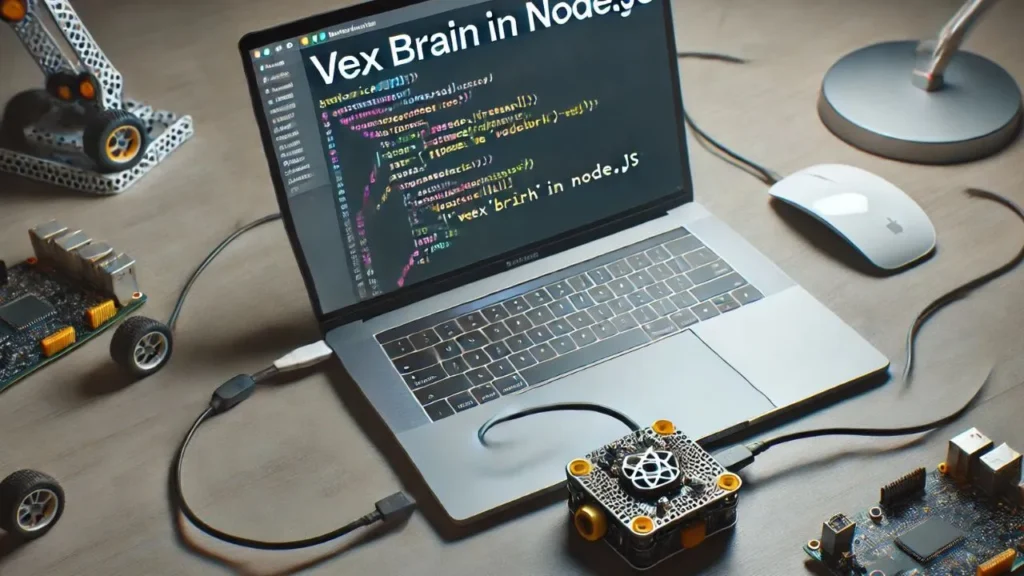As robotics programming expands, VEX robotics kits have become a popular tool for learners and developers. A common topic for those What Is Deviceurl For Vex Brain Nodejs is understanding and implementing DeviceURL. This guide will explore what DeviceURL is, its applications in VEX Brain programming, and practical examples that show its impact in real-world scenarios.
What Is Deviceurl For Vex Brain Nodejs?
DeviceURL is essentially a path that allows Node.js to interface with the VEX Brain, the central control system for VEX robots. When programming a VEX robot, establishing a DeviceURL enables communication between the Node.js application and the VEX hardware. This URL allows developers to send commands, retrieve data, and manage robot functions through JavaScript.
How DeviceURL Works in Node.js for VEX Brain
DeviceURL as a Communication Pathway
In simple terms, DeviceURL acts as a bridge that links the software and hardware. Using Node.js, programmers can interact with the VEX Brain’s various components (motors, sensors, etc.) by accessing specific device URLs.
Primary Functions of DeviceURL in VEX Brain Programming
- Sending Commands: Developers can control motors, change LED colors, and direct movement by sending commands via DeviceURL.
- Data Retrieval: Data from sensors (e.g., distance or color sensors) can be gathered and processed in real-time.
- Device Management: Using DeviceURL, it’s possible to configure and manage connected devices, making VEX Brain more flexible for diverse applications.
Best Practices for Using DeviceURL in VEX Robotics with Node.js
- Start with Simple Commands: Begin by sending basic commands to build familiarity with DeviceURL.
- Monitor Sensor Data: Use DeviceURL to regularly check sensor data, enabling real-time decision-making for the robot.
- Implement Error Handling: Network issues can affect DeviceURL performance. Adding error handling in your code can help manage connectivity problems.
- Utilize Asynchronous Operations: Node.js’s asynchronous nature is beneficial for real-time applications, allowing simultaneous data retrieval and command execution.
Why Use DeviceURL in Node.js?
Using DeviceURL with Node.js offers the flexibility and power of JavaScript, enabling developers to write code that interfaces seamlessly with VEX Brain. Node.js provides an efficient runtime, ideal for handling the non-blocking operations necessary for real-time control and data acquisition in robotics.
Real-World Case Studies: Applications of DeviceURL in VEX Robotics
To demonstrate the effectiveness of DeviceURL in VEX Brain applications, here are a few real-world examples that show how developers and learners utilize it to solve practical problems.
Case Study 1: Building a Line-Following Robot
User: Alex, a high school robotics student.
Project Goal: Alex wanted to create a robot that could autonomously follow a line on the ground.
Challenges: The project involved controlling multiple motors and reading data from optical sensors simultaneously. Alex needed a way to manage these components efficiently.
Solution Using DeviceURL: By setting up DeviceURLs for the motors and sensors, Alex was able to create a Node.js script that continuously monitored the sensor’s feedback and adjusted the motor speed to keep the robot on track.
Outcome: The line-following robot was able to stay on course with minimal errors, showcasing how DeviceURL can facilitate efficient real-time control.
Case Study 2: Remote Control with Web Interface
User: Priya, a hobbyist programmer with an interest in robotics.
Project Goal: Priya aimed to build a simple web interface to control her VEX robot remotely.
Challenges: Creating an interface that communicates with the VEX Brain in real-time required an effective communication pathway that could relay commands quickly.
Solution Using DeviceURL: Priya utilized DeviceURL with Node.js to establish a web server that could send commands to her robot. By mapping controls to specific DeviceURLs, she was able to create an intuitive interface that allowed her to steer the robot, adjust speeds, and monitor sensor data.
Outcome: Priya successfully created an interactive web-based control system, demonstrating how DeviceURL can be used for remote robotics applications.
Case Study 3: Data Collection from Environmental Sensors
User: Jordan, an engineering student working on a data-driven robotics project.
Project Goal: Jordan’s goal was to collect environmental data (such as temperature and distance) from sensors attached to his VEX robot and analyze this data.
Challenges: He needed to find a way to consistently access and log sensor data, which required a reliable interface between Node.js and the VEX Brain.
Solution Using DeviceURL: DeviceURL provided a structured way for Jordan to retrieve data from each sensor in real-time. He created a Node.js application that stored this data in a local database for later analysis.
Outcome: Jordan’s project demonstrated how DeviceURL could facilitate data collection, making it a valuable tool for data-driven projects in robotics.
Key Benefits of DeviceURL in Node.js for VEX Robotics
| Function | Benefits | Real-World Application |
| Command Control | Directs robot movement and actions | Useful in autonomous navigation |
| Sensor Data Retrieval | Gathers real-time data | Essential in data-driven and responsive robots |
| Device Management | Configures connected devices | Useful for setting up complex robot systems |
Setting Up DeviceURL in Node.js for VEX Brain
1. Prerequisites for Using DeviceURL
- Node.js and NPM: Ensure Node.js and npm (Node Package Manager) are installed.
- VEX Device Connection: Connect your VEX Brain to a computer via USB or Bluetooth.
2. Steps to Initialize DeviceURL
Install Required Libraries: Install the necessary Node.js libraries for VEX.
bash
Copy code
npm install vex-js
- Identify Device URLs: DeviceURLs can often be found in the VEX documentation or by listing devices using an API function.
- Write a Basic Command Script: Start with a simple script to send a command to the VEX Brain.
3. Testing the Setup
Run the script to ensure the DeviceURL is correctly configured and commands are successfully sent and received by the VEX Brain.
Conclusion: What Is Deviceurl For Vex Brain Nodejs
DeviceURL plays a pivotal role in programming VEX Brain with Node.js, bridging the gap between software and hardware. It offers developers an accessible, efficient way to control devices, retrieve sensor data, and manage robot components. Through real-world applications and case studies, DeviceURL proves to be a critical tool for anyone interested in robotics, from students to hobbyists and professionals.
By understanding how DeviceURL functions and implementing it effectively, you can unlock the full potential of VEX Brain in your robotics projects. With clear setup instructions, best practices, and troubleshooting tips, this guide equips you to explore new possibilities with your VEX robot.
Frequently Asked Questions
Q1: What is DeviceURL, and why is it important in VEX Brain programming?
DeviceURL is a unique path that facilitates communication between Node.js and the VEX Brain. It allows developers to control devices and retrieve data efficiently.
Q2: Is DeviceURL specific to VEX robots, or is it applicable to other devices?
DeviceURL is primarily used for VEX robots. However, similar methods may be applied in other systems with specific URLs for device communication.
Q3: Can I use DeviceURL without prior programming knowledge?
Some programming knowledge, especially in JavaScript and Node.js, is beneficial. However, beginners can follow tutorials to get started.
Q4: Are there limitations when using DeviceURL in Node.js?
DeviceURL relies on stable connectivity. Therefore, USB or Bluetooth issues can affect performance, and users should ensure stable connections.







